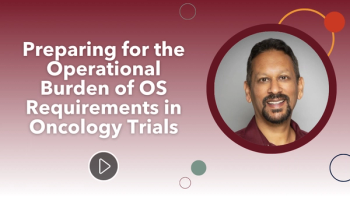
- Applied Clinical Trials-03-01-2006
- Volume 0
- Issue 0
Revisiting the European Union Directive in CEE
The impact of the EU Clinical Trials Directive on current clinical research practices
Central and Eastern Europe (CEE), including the European part of Russia, constitutes a significant part of the European continent with its population of approximately 340 million people (see Figure 1). Good clinical practice (GCP)-compliant research that began in this region in the early 1990s reveals good-quality data and predictable patient recruitment.1 The presence of clinical trials in CEE countries has always been highly valued by the medical community and patients due to the range of opportunities they provide, in particular access to innovative therapies for patients and doctors.
Photography: Comstock, Eyewire Illustration: Paul A. Belci
On 1 May 2004, eight Central and Eastern European countries (the Czech Republic, Estonia, Hungary, Latvia, Lithuania, Poland, Slovakia, and Slovenia) joined the European Union (EU). Poland, with a population of 38.5 million people, is the biggest country among the new CEE EU Member States (see Figure 1), which together have approximately 74 million inhabitants. There was a huge legislative effort to adopt thousands of regulations pertaining to almost every field, including those directly and indirectly related to clinical research (import of goods, insurance law, taxes, etc.) in all of these countries prior to accession to the EU, which itself coincided with the implementation date of the European Union Clinical Trials Directive 2001/20/EC (EU CTD).
Figure 1. Central & Eastern Europe.
In this article, the author explores the impact of the EU CTD on clinical research practices in the new CEE EU Member States from the perspective of a regional (CEE) project leader. The author also refers to CEE countries that are not EU Member States, such as Romania, Bulgaria, and Croatia.
Transposition and implementation
GCP rules were published and followed in most CEE countries in the 1990s, despite not being legally binding. Transposition of the EU CTD into law in the new CEE accession countries commenced in 2002, long before they joined the EU in May 2004 and before the European Commission Guidance Documents were published to give more in-depth clarification to the expectations of the directive.
Belated publication of the Guidance Documents resulted in the need for regulations to be revised in some countries that had already started legislative transposition (e.g., Hungary, the Czech Republic, and Poland) in time to meet the European Commission deadlines.
Today, all the new CEE Member States have implemented the key principles of the directive, including those principles related to the protection of minors and incapacitated adults. Nevertheless, from a regional perspective it is clear that this has not yet brought about a "harmonisation of administrative provisions governing clinical trials," as intended by the directive's authors.
It is worth mentioning that certain CEE non-EU countries such as Romania also have their clinical trial law in line with the EU CTD.2
Review process
Ethics Committees (ECs). All the new Member States (and Romania, Croatia, and Russia) have the procedures and legal framework for accepting a single EC opinion binding for all sites in a multicenter study (see Figure 2). However, in individual countries (e.g., the Czech Republic), this single opinion was added to the opinions previously required of local ECs. In Hungary, the recent law revision introduced a "true" single EC opinion for both ongoing and new trials; however, local ECs will still be involved in site and investigator assessments.
Figure 2. CEE EU countries-Ethics Committee Review.
A parallel review carried out by the Competent Authority (CA) and EC(s), and timelines imposed by law, made the 60-day review timeline realistic in all new CEE Member States. In Hungary, where the CA acts as a go-between for the sponsor and Central EC, the submission is made to the CA only (with the CA decision and review duration depending on the opinion and actual timelines of the Central EC).
Competent Authority (CA). The regulatory process related to clinical trial authorization has not been truly harmonized despite the EU CTD implementation in CEE. Differences exist not only with respect to the application process (format, language, and submission mode—electronic vs. paper) and the attachments required, but most importantly also with respect to the CA's view of their role, responsibilities, and power.
Some CAs focus mostly on a scientific review of the study concept, and others center around an investigational medicinal product (IMP) and its dossier (the Hungarian CA requires IMP samples as part of the submission). Nevertheless, the majority of CAs perceive their role as a purely administrative one, which results in either a smooth and predictable CA review process (in most new CEE Member States) or a lengthy and unpredictable one, as a consequence of the most stringent interpretation of formal requirements.
In Poland, for example, the CA has added a new bureaucratic layer on top of the legal guidelines by requesting originals or notarized copies of documents such as company (sponsor, CRO) registration data or a GMP Compliance Statement. For over a year, the final signed contracts for all participating parties were required as part of a valid submission, which led to extension of the time-to-submission in Poland. The question regarding what the benefits of such an approach might be for subjects and society remains unanswered.
Apart from varying perceptions of their own roles and review processes at the CA, it is clear that there is no common understanding and approach to EU CTD terms such as substantial amendment, or implicit approval, despite the fact that one of the major EU CTD objectives is harmonization of administrative provisions across the EU.
In Poland, where implicit CA authorization is a legally binding rule (in line with the EU CTD), the CA considers that even a minor question during the review process (not in itself a reason for refusal according to & 11 of the Preamble to the directive) transforms the clinical trial application into an exceptionally complex case. Such cases require explicit written authorization even if 60 days have passed after valid submission.
In many CEE countries, implicit approval is not allowed at all. But this is not an issue as long as the 60-day review timeline is respected, which is usually the case.
The Association for Good Clinical Practice in Poland asked major companies in the region to provide data on EC and CA approval timelines between 1 May 2004 and 1 March 2005 in the new accession countries plus Romania and Bulgaria (in Bulgaria, parallel submission to the local ECs and CA is not allowed). Eleven big sponsors and CROs operating in the region answered the survey, giving an optimistic view of approval timelines in postdirective CEE (see Figure 3). In most countries the ethical review took far less than 60 days, and the CA review took between 30 and 60 days. However, in individual countries such as Poland, CA approval timelines were longer after 1 May 2004, from approximately 40 days pre-directive to approximately 75 days postdirective, with no clear reason and contrary to the new regulations.
Figure 3. CA and EC approval timelines after May 1, 2004 (survey GCPpl). CA review time was counted from valid submission to written or implicit approval (clock stop periods subtracted).
Investigational medicinal products
In most CEE EU Member States an IMP import permit is issued as part of the CA approval for a specific study. Depending on the country concerned, the procedure for obtaining the import permit and its definition differ, for example:
- An import permit for IMPs imported from a non-EU country (a third country) is only required in Hungary.
- A single, collective import permit for all IMPs imported for a study is required in Poland regardless of whether the IMP is from a third country or EU territory.
- Separate import permits for every IMP shipment in a study are required in Estonia and Latvia, regardless of whether the IMP is from a third country or EU territory.
In most cases, the import permit is issued after CA approval is granted, which may potentially prolong the review process. The import permit seems to be an example of old pre-EU and predirective regulation that has survived despite substantial legislative revision. Import permits that condition the supply of IMP from EU territory are in disagreement with the EU CTD.
The EU Directive regulates who should be in charge of IMPs in a Member State (article 13) and requires that this body (a person or legal entity) be holder of an authorization for IMP manufacture or IMP importation (from outside the EU). Legal frameworks and procedures for obtaining authorization have been implemented in most new CEE Member States, but requirements again differ from country to country.
Labeling requirements are, with minor exceptions, very similar in EU CEE countries and in line with the European Annex XIII, dated July 2003.
Insurance issues
Clinical trial insurance is mandatory in all CEE countries. There is a variety of different, country-specific requirements, such as who is in fact insured (sponsor, investigator, patient), the type of insurance policy, policy terms, and the place of issue—for example, a local clinical trial insurance policy is required in the Czech Republic, Lithuania, and the non-EU countries Bulgaria, Croatia, and Russia.
Safety reporting
In most new CEE EU Member States (and also in Romania, Bulgaria, and Croatia) there is a legal obligation to report Suspected Unexpected Serious Adverse Drug Reaction (SUSAR) in an expedited manner. However, this is the only uniform safety reporting rule across the region. Regulations pertaining to expedited safety reporting differ with respect to:
- Scope of reporting—what should be reported (all SUSARs for IMPs, all SUSARs that occur in the study in question, all SUSARs that occur in a Member State concerned)?
- Time of reporting—notification of death and life-threatening SUSARs within seven days, all SUSARs within 15 days?
- Recipients—CA, Central EC, Local EC, investigators?
In some CEE countries (e.g., Slovenia) the law does not specify sponsor or investigator obligations related to adverse events/reactions reporting to the CA/EC. In other countries (e.g., the Czech Republic) regulations are very detailed and describe several reporting scenarios; these scenarios depend on the IMP regulatory status, the origin of the report, the report recipient, etc. Only a few countries managed to adjust their regulations to the European Commission Guidance Document on Adverse Events,3 which was published just one day before the EU CTD came into force.
The CAs have—or should have—an institutional base for processing safety information derived from clinical trials. At the same time, many Institutional Review Boards (IRBs)/ECs are overwhelmed by the number, volume, and complexity of reports. Some IRBs/ECs seem to have neither the expertise nor the time to review this information. One might have the misleading feeling that the large volume of data coming every day from different sponsors to ECs is analyzed, and thus subjects' safety is better protected. The effort made by sponsors to comply with divergent, and in many cases, stringent reporting requirements seems to add little real value.
There needs to be a greater search for solutions that support ECs in fulfilling their obligation of continuous monitoring of patient safety (e.g., a safety Web page, periodic listings, etc.). True harmonization of safety reporting rules and ethical review procedures, including safety vigilance, could increase the comparability and quality of EC operations. An Annual Safety Report is required in all new CEE EU Member States.
Academic research
In CEE, as in many other EU countries, the situation of academic research worsened after implementation of the EU CTD.4 Inevitably, the number of valued noncommercial clinical trials will continue to fall because of the new and mostly administrative requirements that are difficult to comply with due to organizational reasons and limited funds.
Conclusions
The EU Directive on Clinical Trials forced the creation of a legal framework for GCP and GMP in all new CEE Member States. It helped systematize national regulations and review systems, leading in most countries to increased predictability of the review process in terms of requirements and timelines.
Unfortunately, EU Directive implementation resulted in only a limited harmonization of procedures across the region. In practice, to a large extent it has increased the paperwork requirements—an increase that is also due to a more precautionary attitude among some CAs in the postdirective era.
EU Directive requirements were merged with existing regulations and review systems in CEE, resulting in implementation outcomes that differ between countries. Obviously all the parties involved (the CA, EC, legislators) and all the countries concerned are still in a learning stage. It is not certain, however, that they will ever meet at the same point.
The EU Directive's objective to harmonize and simplify the administrative procedures that govern clinical trials could be achieved by implementation of a single CA approval process across the EU. Apart from uniformity of the regulatory view on different aspects of clinical research, this could also result in the elimination of a portion of the repetitive paperwork that tends to obscure the patient in the clinical trial process.
Another effect of the directive has been a legal instability in new CEE EU Member States, which has increased uncertainty and the need for legal advice. Taking into account the recent issue of updated or new European documents (e.g., the Directive 2005/28/EC), one has to admit that the changing clinical trial environment is not a transitional difficulty but a long-term reality. It is of course more noticeable for those operating on a regional level (e.g., project leaders).
The turbulence related to the EU CTD implementation did not affect most of the appreciated merits of the CEE region: the high quality of data and speed of patient recruitment. It did, however, involve regulators, ECs, legislators, sponsors, and investigators in an extensive discussion on GCP principles, leading in most cases to an increase in their understanding, and indirectly leading to better protection of study subjects.
Iwona Capala-Szczurko, MD, PhD, is a board member of the Association for Good Clinical Practice in Poland and compliance and training manager, pharma development operations central and eastern Europe, Roche Polska Sp. z o.o., Warsaw, Poland, email:
References
1. N. Sinackevich and J.P. Tassignon, "Speeding the Critical Path," Applied Clinical Trials, January 2004.
2. C. Trandafir, "Romania Plays to Its Regulatory Strengths," Good Clinical Practice Journal, September 2005.
3. European Commission, Detailed Guidance on the Collection, "Verification and Presentation of Adverse Reaction Reports Arising from Clinical Trials on Medicinal Products for Human Use," April 2004.
4. E.A. Singer and C. Druml, "Collateral Damage or Apocalypse Now for European Academic Research," Intensive Care Medicine, 31 (2) (2005).
The views expressed in this article are those of the author and do not necessarily reflect a position of Hoffmann-La Roche.
Articles in this issue
over 19 years ago
GCP's Finality: Personal Integrityover 19 years ago
Quality Control and Assurance in Clinical Researchover 19 years ago
The CTMS Story: Focusing on Needover 19 years ago
Early Studies Aim to Spur Developmentover 19 years ago
The Importance of the Subject in Informed Consentover 19 years ago
Reusrgence Continues to Elude the EUover 19 years ago
Multiplying Development Capacity: A New Modelover 19 years ago
Getting to a Semantic Web on the Internetover 19 years ago
Industry Partnerships: Changing the Way R&D Is Conductedover 19 years ago
eShowcaseNewsletter
Stay current in clinical research with Applied Clinical Trials, providing expert insights, regulatory updates, and practical strategies for successful clinical trial design and execution.






.png)



.png)



.png)
.png)
